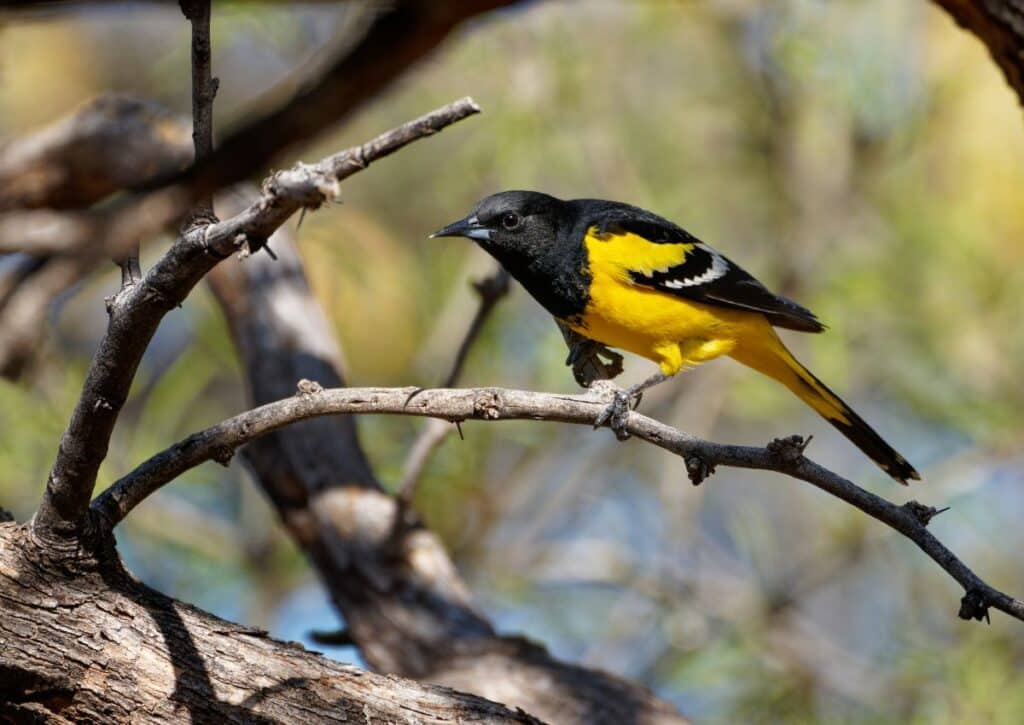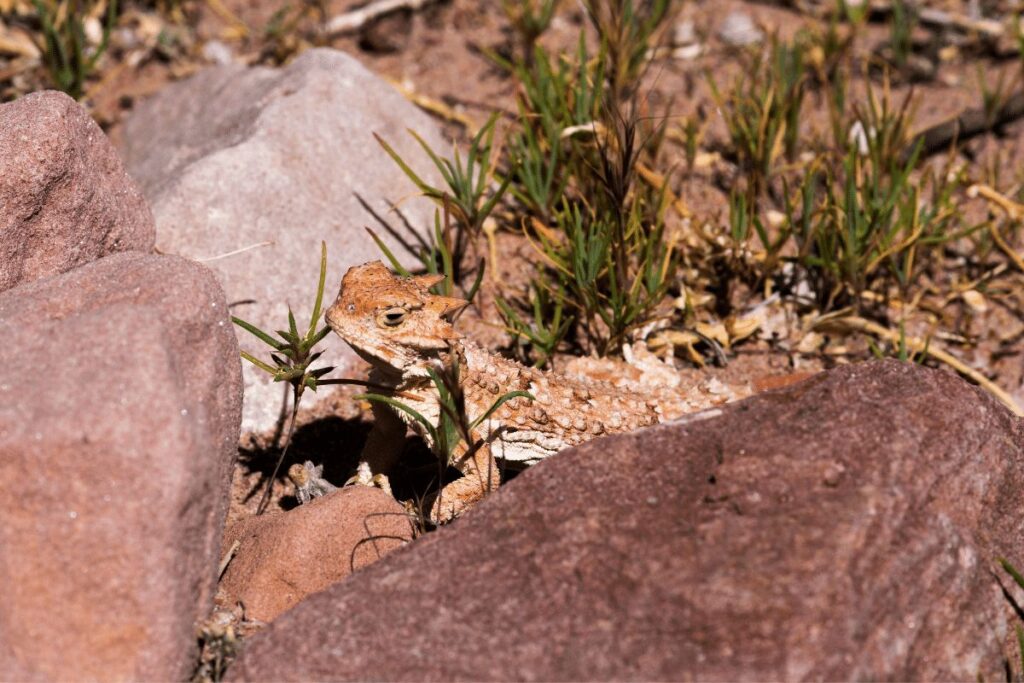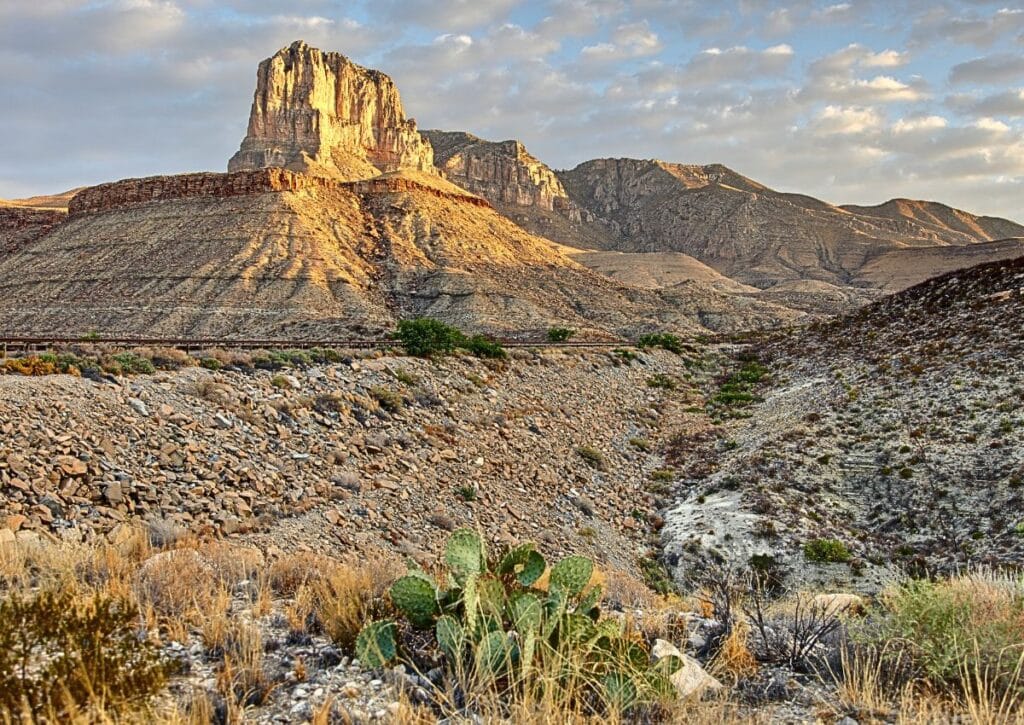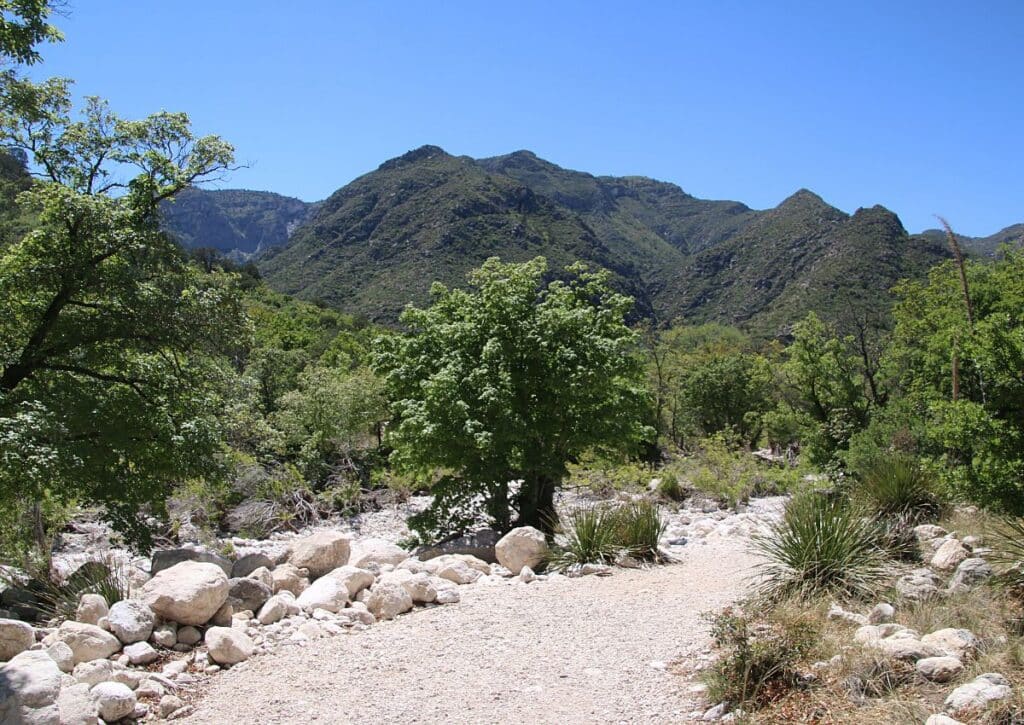Discover birdwatching in Guadalupe Mountains National Park: top spots and common birds for enthusiasts.
Guadalupe Mountains National Park is a birdwatcher’s haven. With its unique topography and diverse habitats, it’s no wonder that this park is a hotspot for avian life.
If you’re keen on spotting the commonly seen birds in Guadalupe Mountains National Park, you’re in for a treat. With over a decade of birdwatching experience in this region, we’ve curated insights and tips to help you make the most of your visit.
We point out what we’ve seen the most often and some rare delights! We also nudge you to areas in the park where we’ve had the most sightings.
So, grab your binoculars and let’s embark on this feathered journey together!
Why Birdwatch in Guadalupe Mountains National Park?
The Guadalupe Mountains National Park, with its sprawling landscapes and diverse ecosystems, is a veritable paradise for birdwatchers. But what makes this park stand out from other birdwatching destinations?
Firstly, the park is home to a plethora of unique bird species that are hard to find elsewhere. The varied terrains, from dense woodlands to open desert plains and high mountain peaks, cater to a wide range of avian habitats.
This diversity ensures that birdwatchers can encounter species that are specifically adapted to these niches.
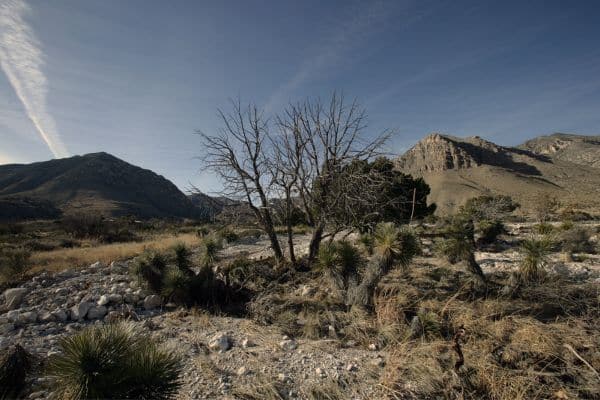
For instance, the elusive Lucifer Hummingbird, primarily found in the Chihuahuan Desert regions, can be spotted here, sipping nectar from blooming agaves and ocotillos. Similarly, the high-altitude-loving Mountain Bluebird often graces the higher reaches of the park with its vibrant presence.
Beyond the individual species, the significance of Guadalupe Mountains National Park as a bird habitat cannot be overstated. The park acts as a crucial migratory pathway for many birds, making it a bustling hub during migration seasons.
Its natural water sources, like the McKittrick Canyon and Smith Spring, serve as essential rest and refueling stops for these long-distance travelers. Additionally, the park’s relatively undisturbed environment offers safe breeding grounds, ensuring the continuation of many species that might be facing habitat threats elsewhere.
Furthermore, the park’s commitment to conservation ensures that these habitats remain pristine and protected. Efforts to maintain the natural balance, control invasive species, and promote native flora all contribute to making the Guadalupe Mountains National Park a sanctuary for birds.
10 Commonly Seen Birds in Guadalupe Mountains National Park
During our many hiking and camping trips as avian and wildlife enthusiasts, we’ve been privileged to encounter a diverse array of birds that call the Guadalupe Mountains home.
From the melodious calls echoing through the canyons to the vibrant flashes of color amidst the foliage, these birds have consistently been delightful companions on our journeys.
In this section, we’ll spotlight ten of these commonly seen birds, sharing our personal experiences and observations. Dive in, and let’s explore the avian wonders that await in the park!
Golden Eagle
The Golden Eagle, with its impressive wingspan of up to 7.5 feet, is one of the most iconic raptors of North America. Sporting a dark brown plumage with golden feathers adorning the back of its neck, this majestic bird exudes an aura of power and grace.
Its keen eyes, sharp talons, and strong beak make it a formidable predator, often hunting mammals, birds, and reptiles.
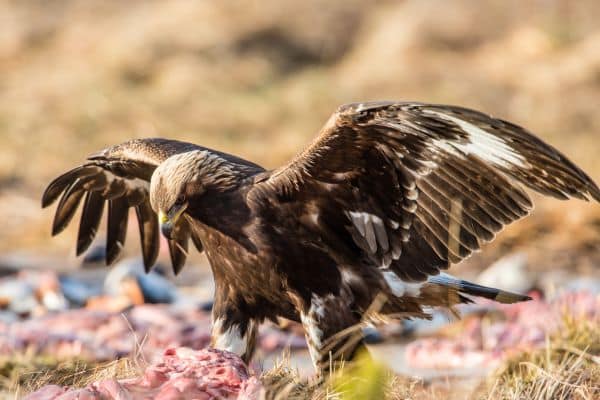
Golden Eagles are most active during the cooler parts of the day, primarily in the early mornings and late afternoons. In the Guadalupe Mountains National Park, they can often be seen soaring over open terrains or perched high on rocky outcrops.
The higher elevations, especially around Guadalupe Peak and the surrounding ridges, offer the best chances to spot these magnificent birds, particularly during the winter months when they are more prevalent.
Lucifer Hummingbird
The Lucifer Hummingbird is a small, enchanting bird, easily distinguishable by its long, curved bill and iridescent purple throat in males. Females sport a more muted greenish-bronze hue.
Weighing just around 3 grams, this hummingbird’s agility and rapid wing beats allow it to hover effortlessly as it feeds on nectar.
The best time to spot the Lucifer Hummingbird in the Guadalupe Mountains National Park is during the spring and summer months when they migrate north for breeding.
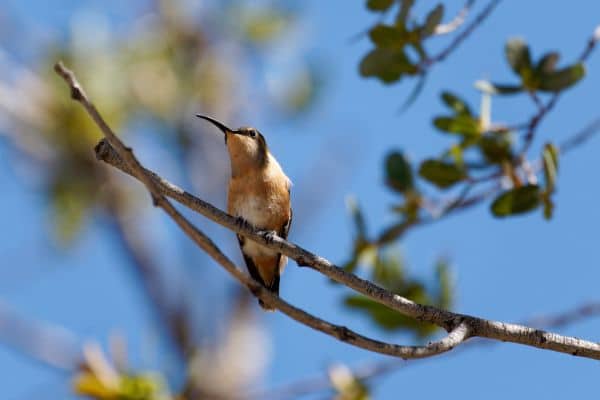
The lower elevations, especially areas with abundant flowering plants like McKittrick Canyon, are ideal.
Early mornings and late afternoons, when these birds are most active in their nectar search, provide the best viewing opportunities. Setting up near blooming agaves or ocotillos can increase your chances of a delightful encounter.
Peregrine Falcon
The Peregrine Falcon is often hailed as the fastest bird in the world, capable of reaching speeds up to 240 mph during its hunting stoop (high-speed dive).
This raptor boasts a sleek, aerodynamic body with a blue-gray back and barred white underparts. Its sharp, yellow-ringed eyes, strong talons, and hooked beak are a testament to its predatory prowess.
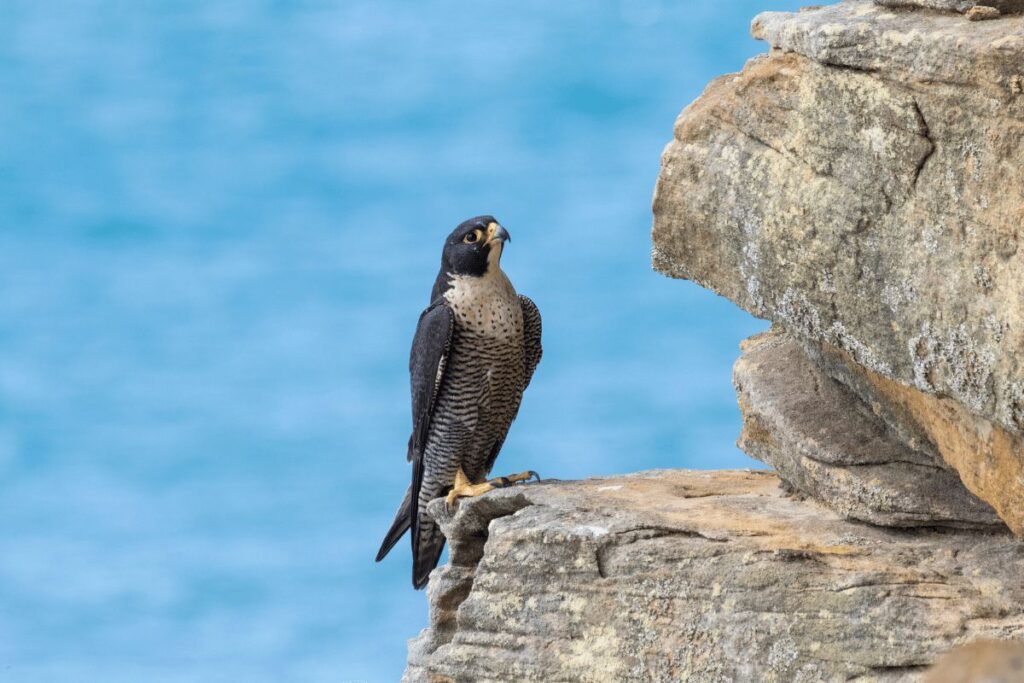
Known for their incredible hunting skills, Peregrine Falcons often target other birds in mid-air.
Peregrine Falcons are year-round residents of the Guadalupe Mountains National Park. The cliffs and high rocky ledges serve as their preferred nesting and perching sites.
For the best chances to spot them, head to areas like Devil’s Hall Trail or the cliffs surrounding McKittrick Canyon.
Early mornings or late afternoons, especially during the breeding season in spring, offer prime viewing opportunities as they engage in hunting or tending to their nests.
Mountain Bluebird
The Mountain Bluebird is a sight to behold with its vibrant blue plumage, which is more intense in males compared to the females’ subtler blue-gray hue.
These birds are slightly larger than sparrows and are known for their melodious songs and graceful flight patterns. Often seen perched on low branches or fences, they feed primarily on insects and berries.
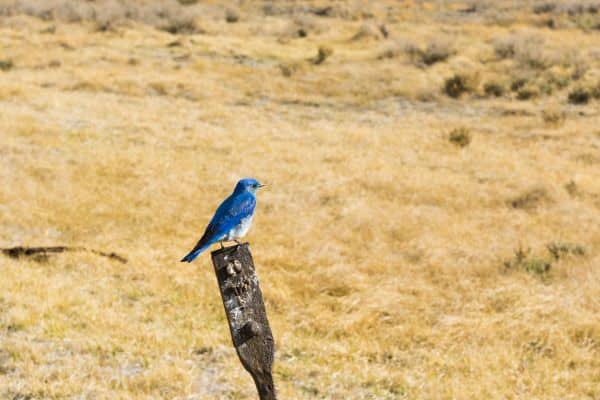
Mountain Bluebirds are most commonly seen in the Guadalupe Mountains National Park during the spring and fall migration seasons. Open meadows and the edges of woodlands, especially around Pine Springs Campground and Frijole Ranch, are their preferred habitats.
Early mornings, when they are most active in their search for food, provide the best opportunities for sightings. Additionally, the onset of spring, with its blooming flowers and buzzing insects, is a particularly good time to observe these beautiful birds in action.
Colima Warbler
Distinguished by its vibrant yellow throat and belly, the Colima Warbler is a sight to behold against the backdrop of the Guadalupe Mountains.
Its olive upperparts and a distinctive chestnut crown make it stand out amidst the foliage. The bird’s melodious trills and chirps add a captivating soundtrack to the park’s serene environment.
The Guadalupe Mountains National Park is a special haven for the Colima Warbler, especially between April and September when they come for breeding.
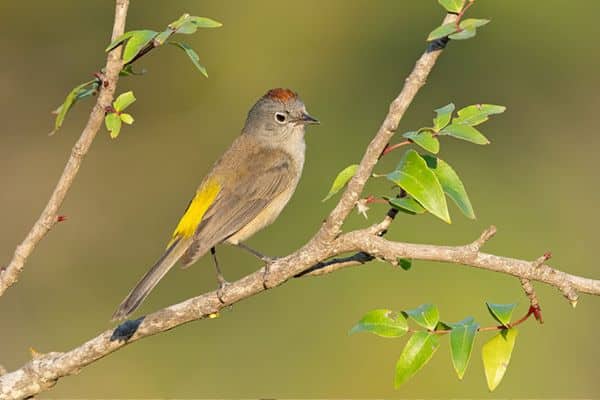
The dense woodlands and shaded canyons, particularly the Bowl Trail and areas around Hunter Peak, are their preferred nesting grounds. Early morning treks are the most rewarding, with the birds’ songs serving as a guide to their locations.
Canyon Towhee
With its muted brown plumage, the Canyon Towhee might seem unassuming at first glance. However, its subtle facial markings, streaked underbelly, and the reddish undertail coverts add layers to its beauty.
Their behavior, often scratching the ground in search of food, is a delightful sight for birdwatchers.
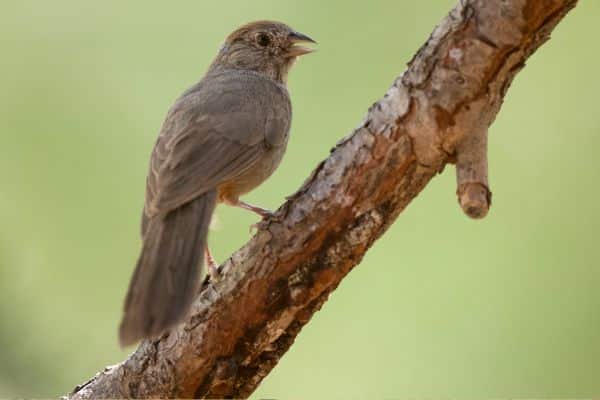
The Canyon Towhees are a common sight throughout the year in the Guadalupe Mountains National Park. They are particularly fond of open, scrubby terrains and can often be found near the park’s campgrounds and picnic areas.
The areas around Dog Canyon and Frijole Ranch are particularly promising. Dawn and dusk, when these birds are in their foraging prime, offer the best birdwatching experiences.
Acorn Woodpecker
The Acorn Woodpecker is a striking bird, easily identifiable by its glossy black body, white face, and vibrant red cap. Its eyes, encircled by a black patch, give it a somewhat surprised expression.
As the name suggests, this woodpecker has a penchant for acorns, often storing them in meticulously drilled holes in trees or wooden structures, creating what’s known as a “granary tree.”
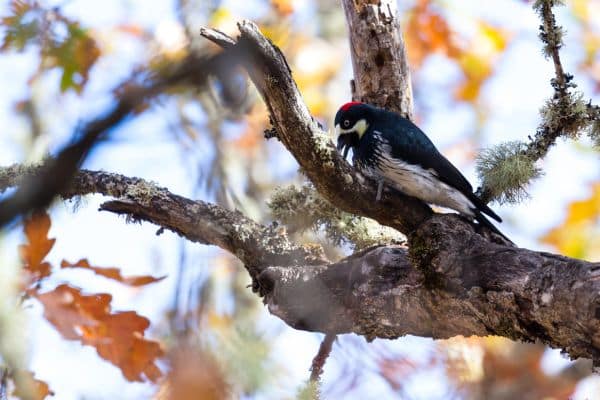
Acorn Woodpeckers are active throughout the year in the Guadalupe Mountains National Park. They are particularly drawn to oak woodlands, given their dependence on acorns.
The areas around Pine Springs and McKittrick Canyon, with their abundance of oak trees, are prime spots to observe these industrious birds. Early mornings, when they are most active drilling holes or foraging, provide the best viewing opportunities.
Mexican Jay
The Mexican Jay, previously known as the Gray-breasted Jay, is a robust bird with a blue head, wings, and tail contrasted against its pale gray underparts.
Their strong, black bills and sociable nature make them easy to spot. Often moving in noisy flocks, their calls and antics add liveliness to the park’s ambiance.
Mexican Jays are prevalent in the Guadalupe Mountains National Park year-round. They prefer the park’s pine-oak woodlands and can often be seen foraging in the underbrush or hopping from branch to branch.
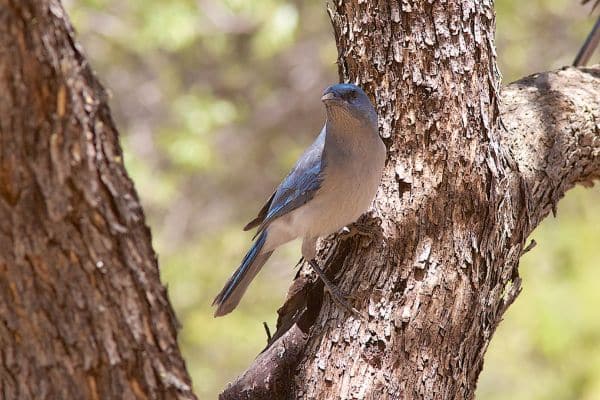
The woodlands surrounding Devil’s Hall Trail and the Smith Spring area are particularly good spots to encounter these gregarious birds. Late mornings, when they are most active and social, are ideal for birdwatchers hoping to observe or photograph them.
Scott’s Oriole
The Scott’s Oriole is a medium-sized songbird that boasts a striking contrast of lemon-yellow and jet-black in its plumage. Males are particularly vibrant, with a black hood, back, and wings set against a bright yellow chest and belly.
The females, while more subdued in coloration with grayish-black and pale yellow, still carry the species’ distinctive elegance. Their melodious songs, a series of clear whistles, are a delight to the ears and often resonate in their preferred habitats.
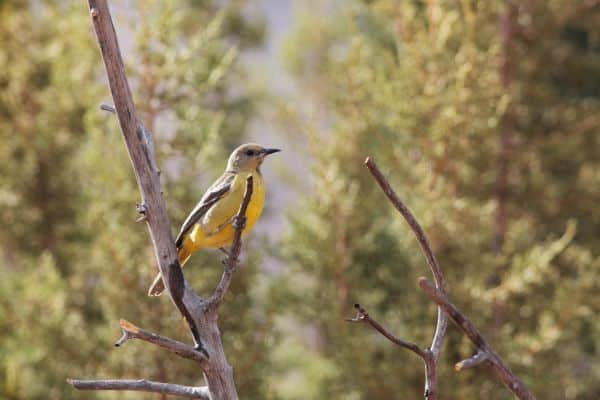
Scott’s Orioles are migratory birds, with the Guadalupe Mountains National Park serving as their breeding ground from late spring to early fall. They have a preference for yucca plants, often building their nests in them.
The lower elevation desert regions of the park, especially around the Pine Springs area and Frijole Ranch, are ideal spots to observe these birds. Early mornings during the breeding season, when males are often seen singing from prominent perches, offer the best chances for sightings.
Black-throated Sparrow
The Black-throated Sparrow is a small, elegant bird that captures attention with its distinct black throat and face, contrasted against a gray head and back. Its white underbelly and bold white supercilium (eyebrow stripe) further accentuate its features.
The bird’s song, a series of clear, melancholic notes, is evocative of the desert landscapes it inhabits.
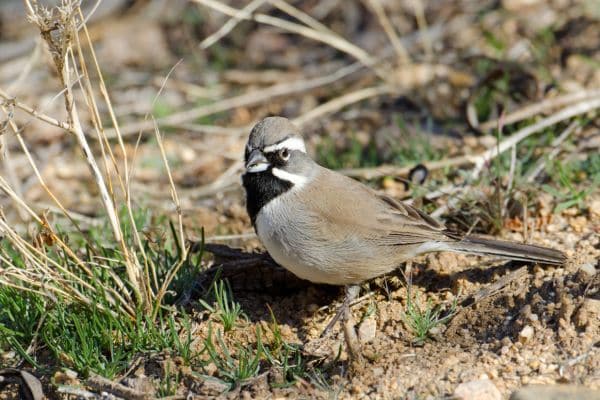
Black-throated Sparrows are most commonly seen in the Guadalupe Mountains National Park during the warmer months, from spring to early fall. They thrive in arid, open areas with sparse vegetation, making the desert scrublands of the park their ideal habitat.
Locations like the foothills surrounding the park’s entrance and the open areas near Dog Canyon are particularly promising.
Dawn and late afternoon, when these birds are actively foraging on the ground or singing from low shrubs, are the prime times for birdwatchers to spot them.
3 Rare Birds Spotted in Guadalupe Mountains National Park
While the Guadalupe Mountains National Park is renowned for its commonly seen avian residents, it also holds the allure of the elusive and rare. For the dedicated birdwatcher, the thrill of spotting a seldom-seen species in its natural habitat is unparalleled.
In this section, we delve into the rarities of the park — those feathered gems that, while not always easily spotted, offer a rewarding challenge and a memorable experience for those patient and fortunate enough to encounter them.
Join us as we explore the hidden avian treasures of the Guadalupe Mountains.
Zone-tailed Hawk
The Zone-tailed Hawk is a medium-sized raptor that often gets mistaken for the more common Turkey Vulture due to its similar silhouette and flight pattern.
However, upon closer inspection, the differences become clear. The Zone-tailed Hawk boasts a sleek black body contrasted by striking white bands on its tail.
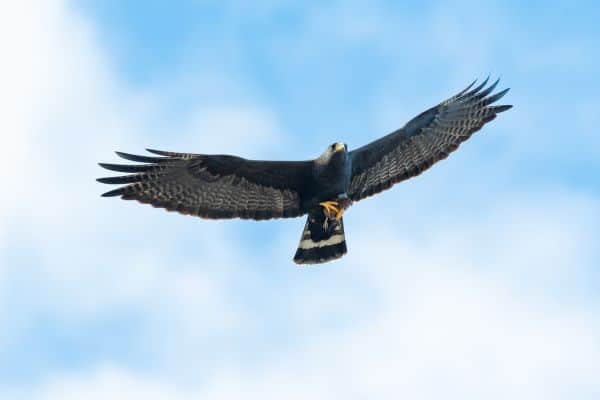
Its yellow legs and cere (the base of the beak) provide subtle color highlights. In flight, the hawk’s broad wings and tail are evident, and its sharp, piercing eyes give away its predatory nature.
Zone-tailed Hawks are not everyday sights in the Guadalupe Mountains National Park, making each encounter special. They are more frequently spotted during the warmer months, from late spring to early fall.
The open canyons and higher elevations, particularly around areas like Devil’s Hall Trail and the cliffs of McKittrick Canyon, have reported occasional sightings.
It’s beneficial to watch the skies during the late mornings and early afternoons, especially when thermals rise, as these hawks often soar high, riding the warm air currents in search of prey.
Flammulated Owl
The Flammulated Owl is a petite owl, standing at just about 6 inches tall, but it carries a distinct charm that captivates bird enthusiasts. Its name derives from the flame-like markings on its face and the intricate patterns on its feathers.
With dark eyes set against a greyish-brown face, it has a somewhat mysterious appearance. The owl’s cryptic plumage, featuring a mix of grey, brown, and rust, allows it to blend seamlessly into the bark of trees, making it a master of camouflage.
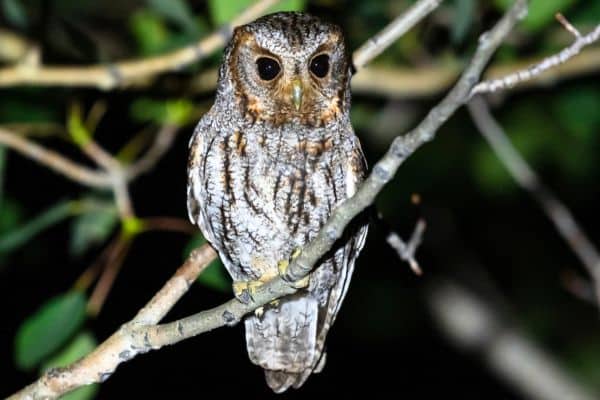
The elusive nature of the Flammulated Owl, combined with its nocturnal habits, makes it a rare find in the Guadalupe Mountains National Park. However, dedicated birdwatchers might have luck during the breeding season, which spans from late spring to early summer.
The dense pine and oak forests of the park, especially around areas like McKittrick Canyon and the higher elevations near Guadalupe Peak, are potential habitats.
Nighttime excursions, equipped with a flashlight and a keen ear for their soft hoots, can increase the chances of a magical encounter with this diminutive owl.
Bendire’s Thrasher
The Bendire’s Thrasher is a medium-sized songbird, characterized by its long, curved bill and a somewhat elongated tail. Its overall plumage is a soft, pale brown, with subtle streaking on the chest and belly.
The bird’s eyes are a striking yellow, adding a touch of color to its otherwise muted appearance. Known for its varied and melodious song, the Bendire’s Thrasher can mimic the calls of other birds, making it a delightful auditory presence in its habitat.
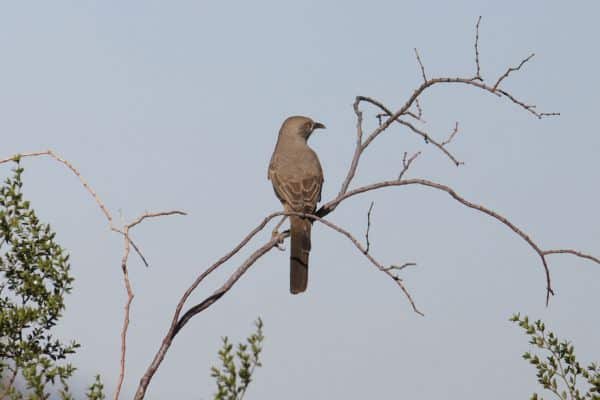
While the Bendire’s Thrasher is more commonly associated with desert landscapes, occasional sightings have been reported in the Guadalupe Mountains National Park.
These are primarily during the migration seasons of spring and fall. The open scrublands and desert regions of the park, particularly around areas like Dog Canyon and the lower elevations near the park’s entrance, are the most likely spots for encounters.
Early mornings and late afternoons, when these birds are actively foraging on the ground or delivering their varied songs from prominent perches, are the best times to spot this elusive thrasher.
Best Birdwatching Spots in Guadalupe Mountains National Park
The Guadalupe Mountains National Park, with its varied terrains and ecosystems, is a haven for birdwatchers. From the low desert scrublands to the towering peaks, the park offers a range of habitats that attract a diverse array of avian species.
Whether you’re a seasoned birder with a keen eye or a novice eager to experience the thrill of spotting unique birds in their natural habitats, the park has something for everyone.
Here, we delve into the best birdwatching spots in the park, each offering its own set of avian wonders.
McKittrick Canyon
Arguably one of the most picturesque locations in the park, McKittrick Canyon is a must-visit for both its scenic beauty and birdwatching opportunities. The dense woodlands, combined with the flowing stream, create a rich habitat that attracts a multitude of bird species.
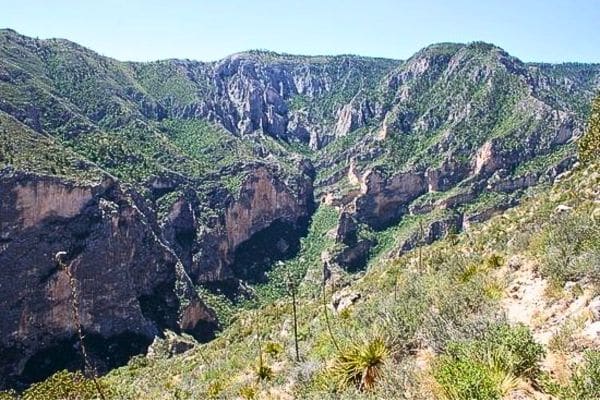
From the vibrant Mountain Bluebirds to the elusive Colima Warblers, the canyon is a hotspot for both common and rare sightings. The changing seasons add another layer of allure, with the fall foliage creating a mesmerizing backdrop for birdwatching.
The trail, while offering panoramic views, also provides several quiet spots where one can set up and patiently observe the avian activities.
Devil’s Hall Trail
For those with a penchant for raptors, the Devil’s Hall Trail is a treasure trove. The rugged terrain, with its cliffs and rocky outcrops, is a preferred habitat for birds of prey.
Peregrine Falcons, with their swift and agile hunting techniques, are a common sight here. The trail, while challenging, offers several vantage points where one can set up binoculars or cameras and wait for these majestic birds to make an appearance.
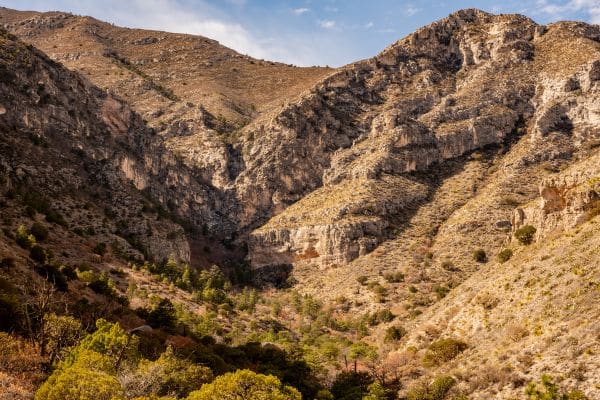
Additionally, the trail’s higher elevations occasionally offer glimpses of high-altitude species, making the hike doubly rewarding.
Guadalupe Peak
Standing tall as the highest point in Texas, Guadalupe Peak is not just a challenge for hikers but also a magnet for high-altitude bird species.
The thin air and cooler temperatures attract species that are not commonly seen in the lower regions of the park. The Golden Eagle, with its impressive wingspan, is often spotted soaring around the peak, riding the thermals.
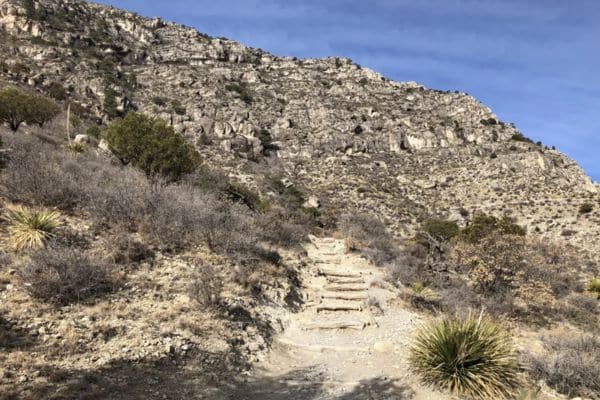
The scrubby vegetation near the peak also attracts several species of sparrows and finches.
Reaching the summit not only offers a sense of achievement but also a bird’s eye view, quite literally, of the avian wonders of the park.
Smith Spring
Water sources in arid regions are always hubs of activity, and Smith Spring is no exception. This natural spring, with its perennial flow, attracts a plethora of bird species, especially during the migration seasons. Birds, after long flights, often descend to the spring for a refreshing drink and a quick bath.
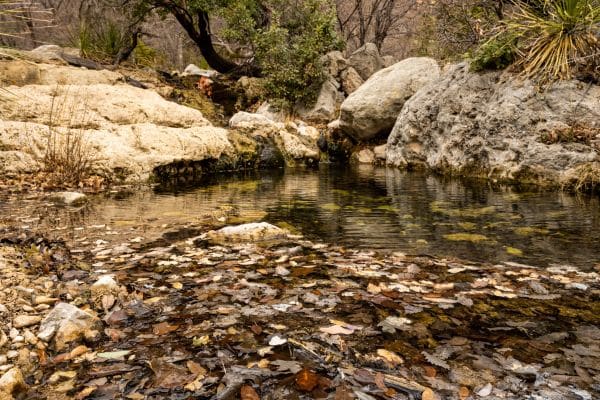
The surrounding vegetation provides ample food sources, making it a bustling spot for birdwatchers. From hummingbirds darting around to larger species like the Zone-tailed Hawk making occasional appearances, Smith Spring is a microcosm of the park’s avian diversity.
Pine Springs Campground
For those who prefer to combine the joys of camping with birdwatching, the Pine Springs Campground is the perfect spot. Located at the base of the mountains, the campground is surrounded by a mix of desert scrub and woodlands.
The early mornings, with the first rays of the sun illuminating the landscape, are magical. The air is filled with the songs of waking birds, from the melodious tunes of the Mountain Bluebird to the intricate calls of the Bendire’s Thrasher.
As the day winds down and the skies take on hues of orange and pink, the campground becomes a hub of activity again, with birds returning to their nests or foraging for a last meal.
Tips for Birdwatching in Guadalupe Mountains National Park
Birdwatching in the Guadalupe Mountains National Park is a rewarding experience, but like any outdoor activity, it requires preparation and knowledge. Here are some in-depth tips to ensure you have a successful and enjoyable birdwatching adventure in the park.
1. Seasonal Timing:
- Spring and Fall: These are peak migration seasons, making them ideal for spotting a wide variety of species. The park becomes a hub of avian activity as birds pass through, either heading north or south.
- Summer: Resident birds are active during this season, and it’s also the breeding season for many, meaning you might catch glimpses of nesting behaviors and fledglings.
- Winter: While some birds migrate to warmer regions, many raptors and high-altitude species can be more easily spotted during this time.
2. Equipment:
- Binoculars: Opt for a pair with a magnification of 8×42 for the best balance between zoom and field of view. Brands like Nikon and Celestron offer models that are both high-quality and durable.
- Cameras: A DSLR or mirrorless camera with a telephoto lens (at least 300mm) is ideal for capturing detailed shots. Consider brands like Canon or Sony for their autofocus capabilities.
- Guidebooks: “Birds of Texas” by Mark W. Lockwood or the “Sibley Field Guide to Birds of Western North America” by David Sibley are excellent choices for the region.
3. Safety:
- Terrain Awareness: The park’s varied terrains can be challenging. Always stick to marked trails, wear sturdy hiking shoes, and be cautious of loose rocks or slippery surfaces.
- Wildlife Encounters: While birdwatching, you might come across other wildlife, like mountain lions or snakes. Always maintain a safe distance and avoid feeding or provoking any animals.
- Hydration: The park can get quite hot, especially in summer. Carry ample water, wear a hat, and apply sunscreen.
4. Etiquette:
- Minimize Disturbance: Avoid playing bird calls on speakers, as this can disturb and stress the birds. Approach nesting sites with caution and never get too close.
- Stay on Trails: This helps protect fragile habitats and ensures you don’t accidentally trample on nests or feeding grounds.
- Respect Other Birdwatchers: If someone is quietly observing or photographing a bird, approach quietly and speak in hushed tones.
5. Join a Group:
- Guided Tours: The park occasionally offers guided birdwatching tours, which can be beneficial for beginners. These tours are led by experienced birders familiar with the park’s avian residents.
- Local Birdwatching Groups: Joining a local group, like the West Texas Audubon Society, can provide camaraderie, shared knowledge, and the joy of birdwatching with fellow enthusiasts.
Other Wildlife in Guadalupe Mountains National Park
Beyond the avian wonders, Guadalupe Mountains National Park is a sanctuary for a diverse array of wildlife, each adapted to the unique challenges and benefits of the park’s varied ecosystems.
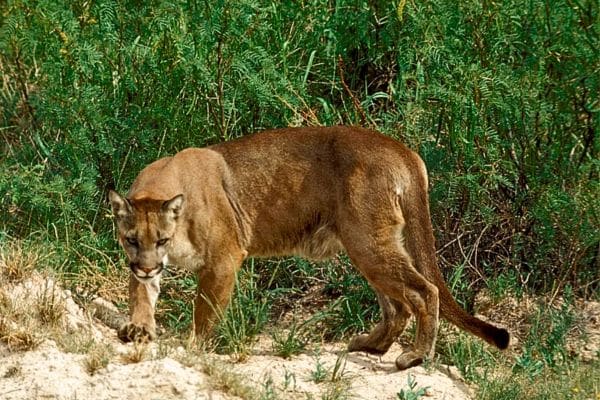
From the stealthy predators that roam its terrains to the smaller critters that often go unnoticed, the park is a testament to nature’s adaptability and resilience. Here’s a glimpse into the other wildlife that calls this park home.
Mammals:
- Mule Deer: Often seen grazing in the meadows or moving gracefully through the woodlands, mule deer are one of the park’s larger herbivores. Their large ears and cautious demeanor make them easy to spot.
- Elk: These majestic creatures, with their impressive antlers, can occasionally be seen in the park’s higher elevations, especially during the cooler months.
- Mountain Lions: While sightings are rare due to their elusive nature, these apex predators are an integral part of the park’s ecosystem. Signs advising on safety precautions in mountain lion territory can be found in certain areas.
- Gray Fox: This nocturnal creature, with its bushy tail and pointed ears, can sometimes be spotted during dawn or dusk, often hunting for small mammals or birds.
Reptiles and Amphibians:
- Western Diamondback Rattlesnake: This venomous snake, easily identifiable by its diamond pattern and rattling tail, can be found sunning itself on rocks or trails.
- Texas Horned Lizard: Often mistaken for a miniature dinosaur, this lizard, with its spiky appearance and unique behaviors, is a fascinating sight.
- Madrean Alligator Lizard: Found in the park’s cooler, shaded areas, this lizard is known for its elongated body and alligator-like scales.
Insects and Arachnids:
- Tarantulas: These large, hairy spiders are often seen during their mating season, crossing roads or trails in search of a mate.
- Giant Desert Centipede: With its vibrant colors and elongated body, this centipede is both intriguing and intimidating. It’s primarily nocturnal and can be found under rocks or logs.
- Monarch Butterflies: During their migration season, these iconic butterflies can be seen fluttering around the park, adding a touch of color and grace.
Remember to always maintain a safe distance from wildlife, respect their habitats, and leave no trace, ensuring that the park remains a sanctuary for generations to come.
In Conclusion
Imagine waking up to the gentle chirping of birds, the cool morning breeze of the Guadalupe Mountains brushing against your face, and the anticipation of what new feathered friend you might encounter that day. That’s the magic of birdwatching in the Guadalupe Mountains National Park.
For those of us who find joy in the simple act of observing birds, this park is like a treasure chest. It’s not just about ticking off species from a list; it’s about those quiet moments of connection, the shared smiles with fellow birdwatchers when you spot something special, and the stories you’ll carry home.
Every trail has its own story, every season brings a new set of winged visitors, and every visit feels like a reunion with old friends and an introduction to new ones. And isn’t that the beauty of birdwatching? It’s not just a hobby; it’s a community. It’s shared moments of wonder, learning, and pure joy.
So, whether you’re a seasoned birder with years of adventures under your belt or someone just starting out with a newfound interest, the Guadalupe Mountains National Park welcomes you. Here, amidst the vast landscapes of Texas, you’ll find a little corner that feels like home, where the birds sing a bit louder, and the world feels just right.

